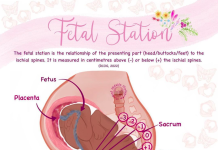Bilingual Infants Think and Learn Differently
Babies who cannot speak may still benefit from a second language. Some education experts say children who learn more than one language before kindergarten have an easier time understanding math concepts, developing thinking skills; using logic; focusing, remembering, and making decisions.
And the earlier they start, the better.

That’s according to a study done by Associate Professor Maria Arredondo at the University of Texas at Austin. Her findings reveal how bilingual infants aged between 6 and 10 months old think and learn differently than those exposed to only one language.
Arredondo experimented by observing over 100 children and administering attention tests on their brains. The babies wore caps with wires, and she ensured they felt comfortable throughout the process by singing songs and sharing toys. The tasks measured how the babies learn, their inhibitory control, memory, and attention, and compared the brain activity of bilinguals and monolinguals.
Her results, published in 2022, show that bilingual babies showed different neural activity than monolingual babies. This suggests that early language exposure can alter a baby’s brain development and may even impact non-linguistic cognitive functions during the first year of life.
Does Early Childhood Bilingualism Benefit The Brain?
Bilingualism has been controversial for many years, with some people opposed to it while others champion its benefits. There has been a lot of conflicting information and myths about raising children in bilingual homes, to the extent that some pediatricians advise against exposing children to two languages.
In essence, bilingual individuals divide their time between two languages and need to learn twice as many words and phrases as a child who only knows one language. The acquisition and proficiency levels of each language can vary for bilingual learners.
Arredondo’s study suggests bilingual children can differentiate languages before their first words. This skill helps to strengthen the part of the brain responsible for managing behavior and planning.
Bilingual children performed tasks at the same level as monolinguals but used a different part of their brain, even when doing a non-language-related errand. “Bilinguals were engaging their left frontal cortex to a much greater extent than the monolinguals,” Arrendondo explained on the Standford Psychology Podcast. “[The monolinguals] were engaging the right frontal region. Some were engaging the left frontal region but not to the same extent as the bilinguals.”
Similarly, Arrendondo noticed from her research that while bilinguals don’t necessarily perform tasks better than monolinguals, she saw some surprising benefits. “The bilingual babies [6-10 months] are showing better developmental progression than the monolinguals,” Arrendondo said. “Monolinguals and bilinguals are improving with age, but the bilinguals are showing faster exertion of it.”
While at six months, both monolinguals and bilinguals engaged two regions, or “channels” of the brain, by ten months, the hidden superpower of the bilingual brain became apparent. “The bilinguals were engaging more channels than the monolinguals, I think they engaged eight channels, and the monolinguals engaged four channels,” Arrendondo explained on the podcast.
“There is more activity emerging in the bilinguals than the monolinguals, and it correlated with performance; so better performance at six months was also correlated with more activity. It’s beginning to show that the bilingual brain is adapting very early on, and it’s just showing the neuroplasticity of the bilingual brain.”
When she ran correlations with the school-aged children, she would see that this greater activity was related to better language proficiency.
Bilinguals Think and Learn Differently
Bilingual children have a special ability to mix words from two different languages when speaking. This is known as code-mixing, and it can often appear as though the child is confused; however, research suggests that it may indicate bilinguals’ ingenuity.
In some language communities, this type of code-mixing is common among adults, and children copy what they hear. Furthermore, code-mixing is also a way for bilinguals to quickly use words from the language they are more familiar with if they cannot easily find the right word in another language. Therefore, it is important to understand that this behavior does not necessarily indicate confusion but rather a common adaptation of speaking two languages.
It’s worth noting that the bilingual babies who experienced the most significant rise in brain activity in the left frontal region were also those who were exposed to higher levels of “code-switching” between multiple languages at home and were more successful in accomplishing the task according to Arredondo’s findings. This suggests that code-switching between languages may help sharpen bilinguals’ attention and boost learning.
“These papers show that bilinguals’ brains and ability in attention are adapting to their environment and improving over time,” Arredondo told The University of Texas at Austin. “This code-switching environment may be making them better at learning, but we don’t fully know that from this data. It’s all correlational.”
Is It Better To Start Learning a Language Earlier?
With her findings, Arredondo hopes to encourage more parents to introduce a second language early on. But is earlier really better?
“It’s a question the field is still trying to understand. There are a lot of research studies showing that executive function abilities will support academic achievement. We know that better executive function will lead to better reading and math abilities,” Arredodo told the podcast. “We do know that when you are a bilingual child, you are more sensitive to the linguistic features of the language, which is related to academic abilities as well.”
According to the National Library of Medicine, those who are exposed to two languages from birth tend to have better accents, more extensive vocabularies, and better grammar proficiency than sequential bilinguals. Additionally, they have a higher ability to process language in real-time.
For example, those who learn Spanish and English from birth are much more adept at using grammatical gender than those who study Spanish as their second language when they get older.
Arredondo believes that bilingualism isn’t just beneficial for academic performance but developing critical social skills. Research has revealed that being immersed in multiple cultures can increase awareness of others’ emotions and social behaviors related to better social abilities. Learning two languages early on could provide children with a valuable tool for navigating social interactions with others.
Although language learning abilities decrease as one gets older, it is still possible to learn a new language no matter how old you are. By using the correct methods and committing to it, anyone can become a skilled bilingual, regardless of age.




